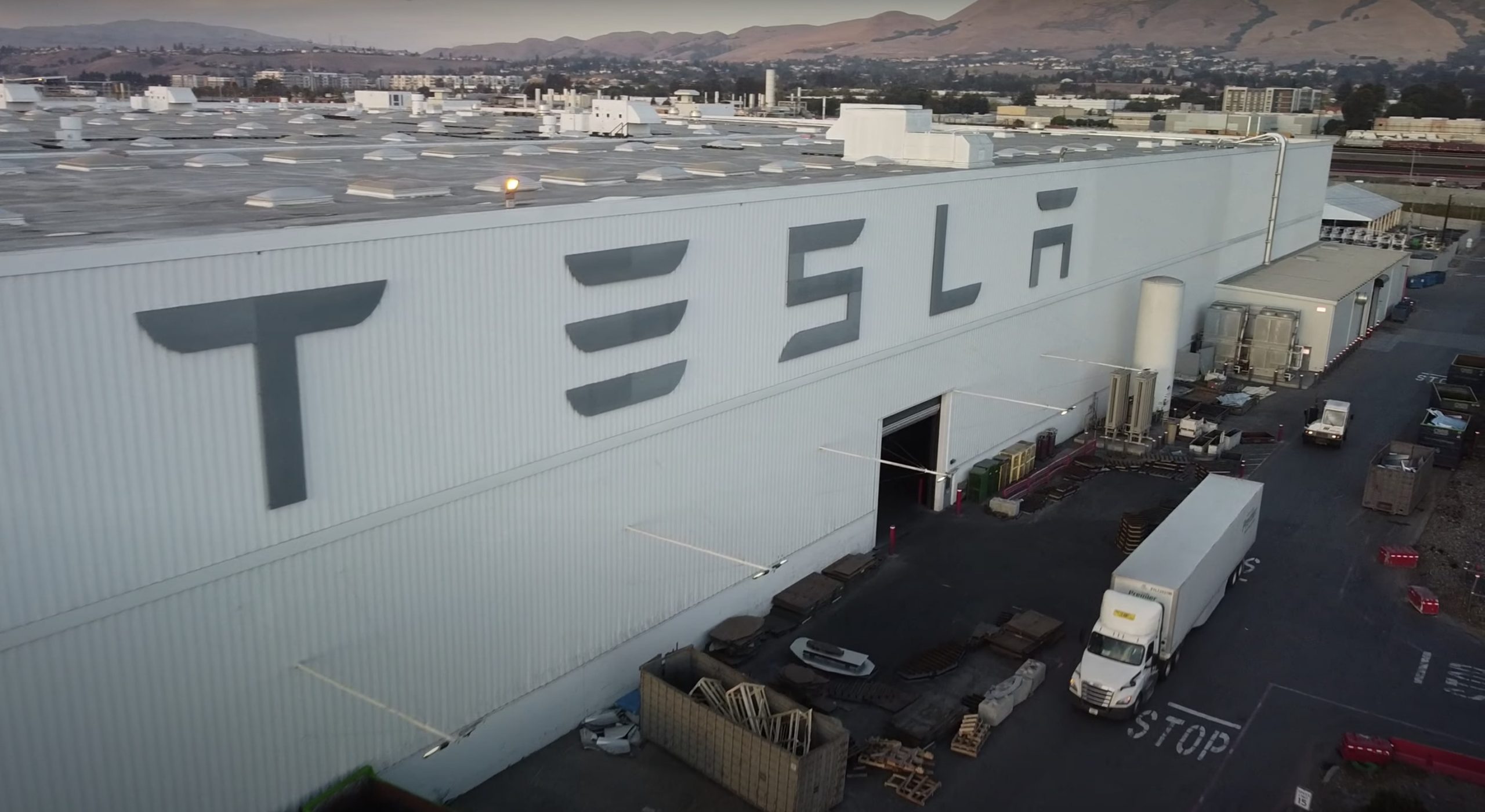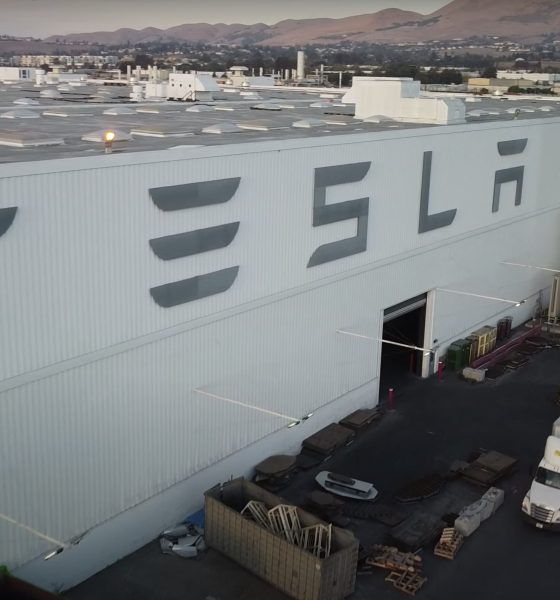

Investor's Corner
Top 10 questions Tesla investors want answered in the Q4 2021 earnings call
Tesla’s (NASDAQ: TSLA) retail and institutional investors are aggregating a number of inquiries that will potentially be addressed by the electric car maker’s executives in the upcoming Q4 2020 earnings call, which will be held on Wednesday, January 26, 2022. The questions are aggregated from verified TSLA shareholders by Say, a startup that aims to create and develop investor communication tools.
Using the platform, Tesla’s retail and institutional investors have been submitting and voting on inquiries they wish to be discussed and clarified by the electric car maker. Here are a number of notable questions that garnered a high number of votes from the company’s retail and institutional shareholders.
Retail Shareholders
- What’s the current volume of 4680 cells? Please update us on progress of in-house battery cell and structural battery pack production.
- How is the progress of the $25k compact car? Can you give any updates?
- As Free Cash Flow grows well in excess of Capital Expenditures, what will you do with the pile of cash? Accelerate Gigafactories? Accelerate Battery production? Finance your own fleet of Robotaxi’s and Grid Storage? Something else? How are you thinking about this?
- What are the biggest obstacles for Cybertruck volume production besides batteries shortage?
- Tesla is growing rapidly, is Tesla growing the customer service at the same pace? How do you plan to make better car service with this rate of growth?
Institutional Investors
- Since we’re talking product roadmaps today, how do you view domestic cooling and heating in the context of accelerating the sustainable energy transition and how might Tesla’s HVAC and heat pump advances fit in?
- Would you consider splitting FSD packages into ‘perpetual’ and ‘term’ (i.e. life of car) licenses? With a higher tier of both options for commercial use? A perpetual license could be attached to an individual or business and not to the vehicle.
- Given that SpaceX is massively expanding satellite-based data communications, are there any plans to add satellite receivers to Tesla vehicles/ further expand the telecoms capabilities? Please put this in context of plans around product offerings in your “walled garden.”
- You mentioned a prototype of Optimus by end of the year. Are there any thoughts as to initial use cases and/or customers (and thus volumes and scale)?
- How much of Tesla’s margin improvement is from (1) economies of scale; (2) production line design efficiencies; (3) reduced transportation costs from multiple plant locations; (4) pricing vs cost inflation; or (5)other sources, and how much further could margin improve and why?
Tesla is yet to fully confirm if it will be entertaining questions from Say in the upcoming Q4 earnings call, though the company has regularly addressed inquiries from retail shareholders in past quarters and for other events.
Tesla’s fourth-quarter earnings call is expected to be held on Wednesday, January 26, 2022, at 2:30 p.m. Pacific Time (5:30 p.m. Eastern Time).
The full list of questions from TSLA’s retail and institutional investors listed on Say could be accessed here.
Updated 1:16 PM EST: Earnings Call will take place at 5:30 PM EST, not 6:30 PM EST as previously stated.
I’d love to hear from you! If you have any comments, concerns, or questions, please email me at joey@teslarati.com. You can also reach me on Twitter @KlenderJoey, or if you have news tips, you can email us at tips@teslarati.com.
Disclosure: Joey Klender is a TSLA Shareholder.

Investor's Corner
Tesla stock closes at all-time high on heels of Robotaxi progress

Tesla stock (NASDAQ: TSLA) closed at an all-time high on Tuesday, jumping over 3 percent during the day and finishing at $489.88.
The price beats the previous record close, which was $479.86.
Shares have had a crazy year, dipping more than 40 percent from the start of the year. The stock then started to recover once again around late April, when its price started to climb back up from the low $200 level.
This week, Tesla started to climb toward its highest levels ever, as it was revealed on Sunday that the company was testing driverless Robotaxis in Austin. The spike in value pushed the company’s valuation to $1.63 trillion.
Tesla Robotaxi goes driverless as Musk confirms Safety Monitor removal testing
It is the seventh-most valuable company on the market currently, trailing Nvidia, Apple, Alphabet (Google), Microsoft, Amazon, and Meta.
Shares closed up $14.57 today, up over 3 percent.
The stock has gone through a lot this year, as previously mentioned. Shares tumbled in Q1 due to CEO Elon Musk’s involvement with the Department of Government Efficiency (DOGE), which pulled his attention away from his companies and left a major overhang on their valuations.
However, things started to rebound halfway through the year, and as the government started to phase out the $7,500 tax credit, demand spiked as consumers tried to take advantage of it.
Q3 deliveries were the highest in company history, and Tesla responded to the loss of the tax credit with the launch of the Model 3 and Model Y Standard.
Additionally, analysts have announced high expectations this week for the company on Wall Street as Robotaxi continues to be the focus. With autonomy within Tesla’s sights, things are moving in the direction of Robotaxi being a major catalyst for growth on the Street in the coming year.
Elon Musk
Tesla needs to come through on this one Robotaxi metric, analyst says
“We think the key focus from here will be how fast Tesla can scale driverless operations (including if Tesla’s approach to software/hardware allows it to scale significantly faster than competitors, as the company has argued), and on profitability.”

Tesla needs to come through on this one Robotaxi metric, Mark Delaney of Goldman Sachs says.
Tesla is in the process of rolling out its Robotaxi platform to areas outside of Austin and the California Bay Area. It has plans to launch in five additional cities, including Houston, Dallas, Miami, Las Vegas, and Phoenix.
However, the company’s expansion is not what the focus needs to be, according to Delaney. It’s the speed of deployment.
The analyst said:
“We think the key focus from here will be how fast Tesla can scale driverless operations (including if Tesla’s approach to software/hardware allows it to scale significantly faster than competitors, as the company has argued), and on profitability.”
Profitability will come as the Robotaxi fleet expands. Making that money will be dependent on when Tesla can initiate rides in more areas, giving more customers access to the program.
There are some additional things that the company needs to make happen ahead of the major Robotaxi expansion, one of those things is launching driverless rides in Austin, the first city in which it launched the program.
This week, Tesla started testing driverless Robotaxi rides in Austin, as two different Model Y units were spotted with no occupants, a huge step in the company’s plans for the ride-sharing platform.
Tesla Robotaxi goes driverless as Musk confirms Safety Monitor removal testing
CEO Elon Musk has been hoping to remove Safety Monitors from Robotaxis in Austin for several months, first mentioning the plan to have them out by the end of 2025 in September. He confirmed on Sunday that Tesla had officially removed vehicle occupants and started testing truly unsupervised rides.
Although Safety Monitors in Austin have been sitting in the passenger’s seat, they have still had the ability to override things in case of an emergency. After all, the ultimate goal was safety and avoiding any accidents or injuries.
Goldman Sachs reiterated its ‘Neutral’ rating and its $400 price target. Delaney said, “Tesla is making progress with its autonomous technology,” and recent developments make it evident that this is true.
Investor's Corner
Tesla gets bold Robotaxi prediction from Wall Street firm
Last week, Andrew Percoco took over Tesla analysis for Morgan Stanley from Adam Jonas, who covered the stock for years. Percoco seems to be less optimistic and bullish on Tesla shares, while still being fair and balanced in his analysis.

Tesla (NASDAQ: TSLA) received a bold Robotaxi prediction from Morgan Stanley, which anticipates a dramatic increase in the size of the company’s autonomous ride-hailing suite in the coming years.
Last week, Andrew Percoco took over Tesla analysis for Morgan Stanley from Adam Jonas, who covered the stock for years. Percoco seems to be less optimistic and bullish on Tesla shares, while still being fair and balanced in his analysis.
Percoco dug into the Robotaxi fleet and its expansion in the coming years in his latest note, released on Tuesday. The firm expects Tesla to increase the Robotaxi fleet size to 1,000 vehicles in 2026. However, that’s small-scale compared to what they expect from Tesla in a decade.
Tesla expands Robotaxi app access once again, this time on a global scale
By 2035, Morgan Stanley believes there will be one million Robotaxis on the road across multiple cities, a major jump and a considerable fleet size. We assume this means the fleet of vehicles Tesla will operate internally, and not including passenger-owned vehicles that could be added through software updates.
He also listed three specific catalysts that investors should pay attention to, as these will represent the company being on track to achieve its Robotaxi dreams:
- Opening Robotaxi to the public without a Safety Monitor. Timing is unclear, but it appears that Tesla is getting closer by the day.
- Improvement in safety metrics without the Safety Monitor. Tesla’s ability to improve its safety metrics as it scales miles driven without the Safety Monitor is imperative as it looks to scale in new states and cities in 2026.
- Cybercab start of production, targeted for April 2026. Tesla’s Cybercab is a purpose-built vehicle (no steering wheel or pedals, only two seats) that is expected to be produced through its state-of-the-art unboxed manufacturing process, offering further cost reductions and thus accelerating adoption over time.
Robotaxi stands to be one of Tesla’s most significant revenue contributors, especially as the company plans to continue expanding its ride-hailing service across the world in the coming years.
Its current deployment strategy is controlled and conservative to avoid any drastic and potentially program-ruining incidents.
So far, the program, which is active in Austin and the California Bay Area, has been widely successful.








